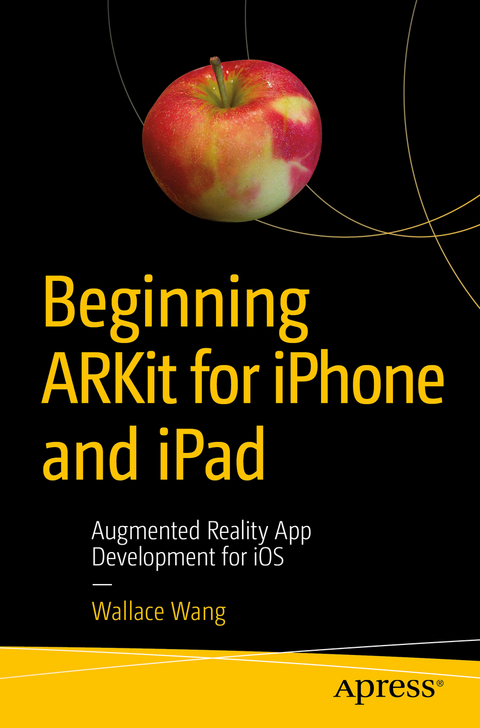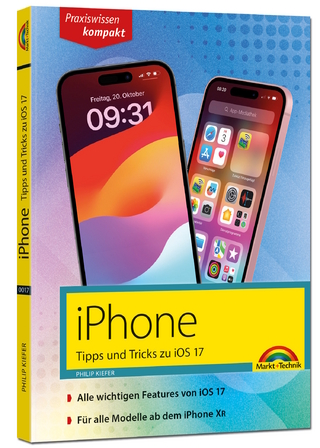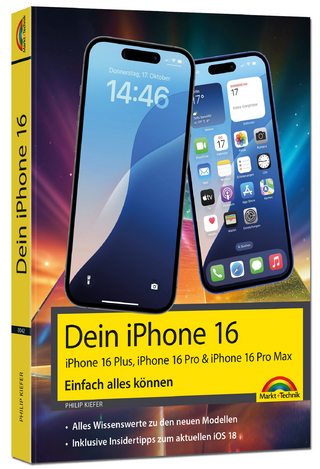
Beginning ARKit for iPhone and iPad
Apress (Verlag)
978-1-4842-4101-1 (ISBN)
You’ll start by accessing the camera and teaching your app to track the world around its device. You'll then see how to position nodes and create augmented reality shapes and textures. Next you’ll have your creations interact with their environment by programming workable physics, detecting planes, measuring distance, and applying virtual force. Finally you’ll learn how to hit test and troubleshoot your applications to ensure they interact with the real world around them seamlessly.
ARKit is Apple’s software framework for creating augmented reality apps on iOS devices such as the iPhone and iPad. Unlike virtual reality that creates an entirely artificial world for the user to view and explore, Beginning ARKit for iPhone and iPad will show you how augmented reality places artificial items in an actual scene displayed by an iOS device’s camera.
What You’ll Learn
Access the camera
Use ARKit’s hit testing for tracked geometry
Apply and combine real world and virtual physics
Who This Book Is For
Programmers familiar with the basics of Swift programming who want to dive into developing iOS applications with Swift.
Wallace Wang has written more than 40 computer books, including macOS Programming For Absolute Beginners, Absolute Beginners Guide to Computing, Pro iPhone Development with Swift, and Android Apps for Absolute Beginners. In addition to programming with Swift, Java, and other languages for the Mac, iOS, and Android; he also performs stand-up comedy, having appeared on A&E s "Evening at the Improv," and having performed in Las Vegas at the Riviera Comedy Club at the Riviera Hotel & Casino. When he’s not writing programming books or performing stand-up comedy, he also enjoys blogging about screenwriting at his site, The 15 Minute Movie Method, where he shares screenwriting tips with other aspiring screenwriters who all share the goal of breaking into Hollywood.
Chapter 1: Interacting with the Real World.- Chapter 2: Getting to Know ARKit.- Chapter 3: World tracking.- Chapter 4: Working with shapes.- Chapter 5: Working with lights.- Chapter 6: Positioning Objects.- Chapter 7: Rotating objects.- Chapter 8: Drawing on screen.- Chapter 9: Adding touch gestures to augmented reality.- Chapter 10: Interacting with augmented reality.- Chapter 11: Plane detection.- Chapter 12: Physics on virtual objects.- Chapter 13: Interacting with the real world.- Chapter 14: Image detection.- Chapter 15: Displaying video and virtual models.- Chapter 16: Image tracking and object detection.- Chapter 17: Persistence.- Appendix A: Converting 3D model files.- Appendix B: Creating virtual objects visually.
| Erscheinungsdatum | 22.11.2018 |
|---|---|
| Zusatzinfo | 149 Illustrations, black and white; XI, 489 p. 149 illus. |
| Verlagsort | Berkley |
| Sprache | englisch |
| Maße | 155 x 235 mm |
| Themenwelt | Informatik ► Betriebssysteme / Server ► iOS |
| Informatik ► Betriebssysteme / Server ► Macintosh / Mac OS X | |
| Informatik ► Programmiersprachen / -werkzeuge ► Mac / Cocoa Programmierung | |
| Mathematik / Informatik ► Informatik ► Software Entwicklung | |
| Schlagworte | Apple • ARKit • augmented reality • Ios • iPad • iPhone |
| ISBN-10 | 1-4842-4101-0 / 1484241010 |
| ISBN-13 | 978-1-4842-4101-1 / 9781484241011 |
| Zustand | Neuware |
| Informationen gemäß Produktsicherheitsverordnung (GPSR) | |
| Haben Sie eine Frage zum Produkt? |
aus dem Bereich


